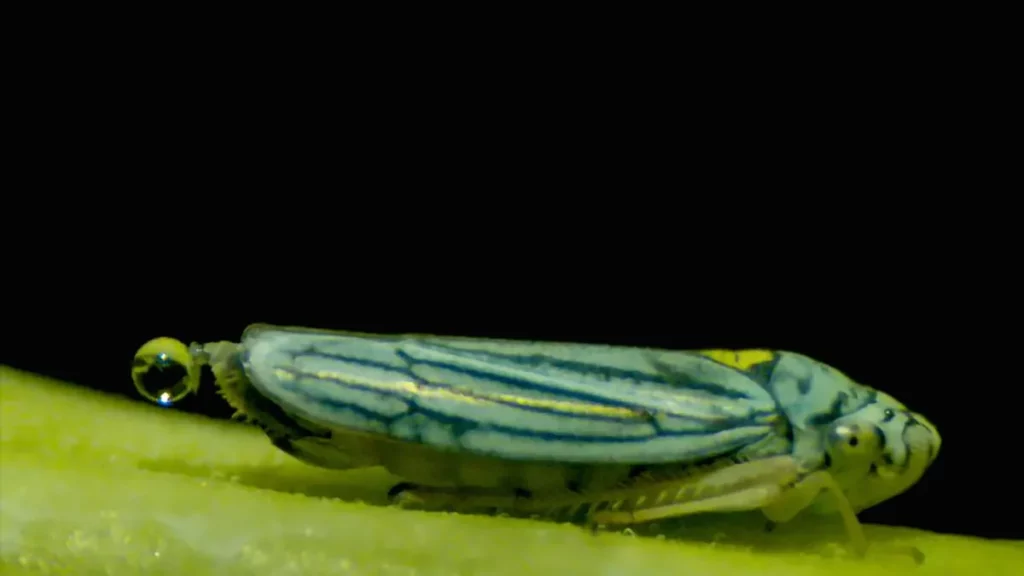
Sharpshooter insects are a fascinating group of insects that belong to the Cicadellidae family. True to their name, these tiny insects are known for the incredible accuracy with which they shoot droplets of urine from their bodies at extremely high speed. In fact, that’s mostly what they do all day as they are known to excrete 300 times their own body weight per day in pee.
Researchers at the Georgia Institute of Technology in Atlanta zoomed in on the behinds of these remarkable leafhoppers and in the process unveiled some striking new insights. According to the new findings presented today in the journal Nature Communications, sharpshooters are able to eliminate such high volumes of waste by employing droplet superpropulsion, a mechanism that allows the insects to launch urine out of their bodies quickly and energy-efficiently rather than releasing a jet stream like other members of the Cicadellidae family.
Sharpshooters, which measure just a few millimeters in length, enjoy feeding on the sap of xylem, the vein-like tube that plants use to transport water and nutrients from the roots up the plant stem and into the leaves. This is not very nutritious food. In fact, it’s mostly water, which is why the insects have to consume a lot of sap. But what goes in must come out, so the sharpshooters have to pee frequently — a whole lot! They eliminate hundreds of times their body weight per day, compared to just 2.5% of daily body weight for humans.
Peeing that much, that often must be a lot of work. How do the sharpshooters do it without exhausting themselves?
Saad Bhamla and colleagues analyzed 22 waste ejections from five glassy-winged sharpshooters (Homalodisca vitripennis) using computational fluid dynamics and biophysical experiments. They came to the conclusion the insects use superpropulsion — an excretion mechanism that involves tuning the insect’s “butt flicker” to the frequency of the urine output. Instead of a stream of liquid waste as seen in other insects, the sharpshooters essentially launch urine droplets with 40 G’s worth of acceleration.
“Little is known about the fluid dynamics of excretion, despite its impact on the morphology, energetics, and behavior of animals,” Bhamla said. “We wanted to see if this tiny insect had come up with any clever engineering or physics innovations in order to pee this way.”
According to Bhamla, superpropulsion is a very powerful design that is rarely seen in engineering and has never been detected in an organism until now. Most likely, this mechanism appeared due to natural selection, which pressured the insects to find a solution to their frequent excretion. When the sharpshooter’s anal stylus oscillates rapidly and in tune with the frequency of the urine droplets, up to eight times less energy is required to expel waste than if they were spraying the urine in jets.
Learning more about the secret method that sharpshooters use to expel their waste is not only worth pursuing from a biology standpoint. The findings could inspire other scientists with ideas for similar energy-saving tricks for soft robots or self-cleaning structures.






